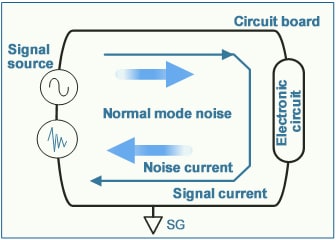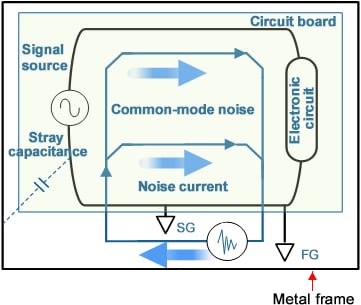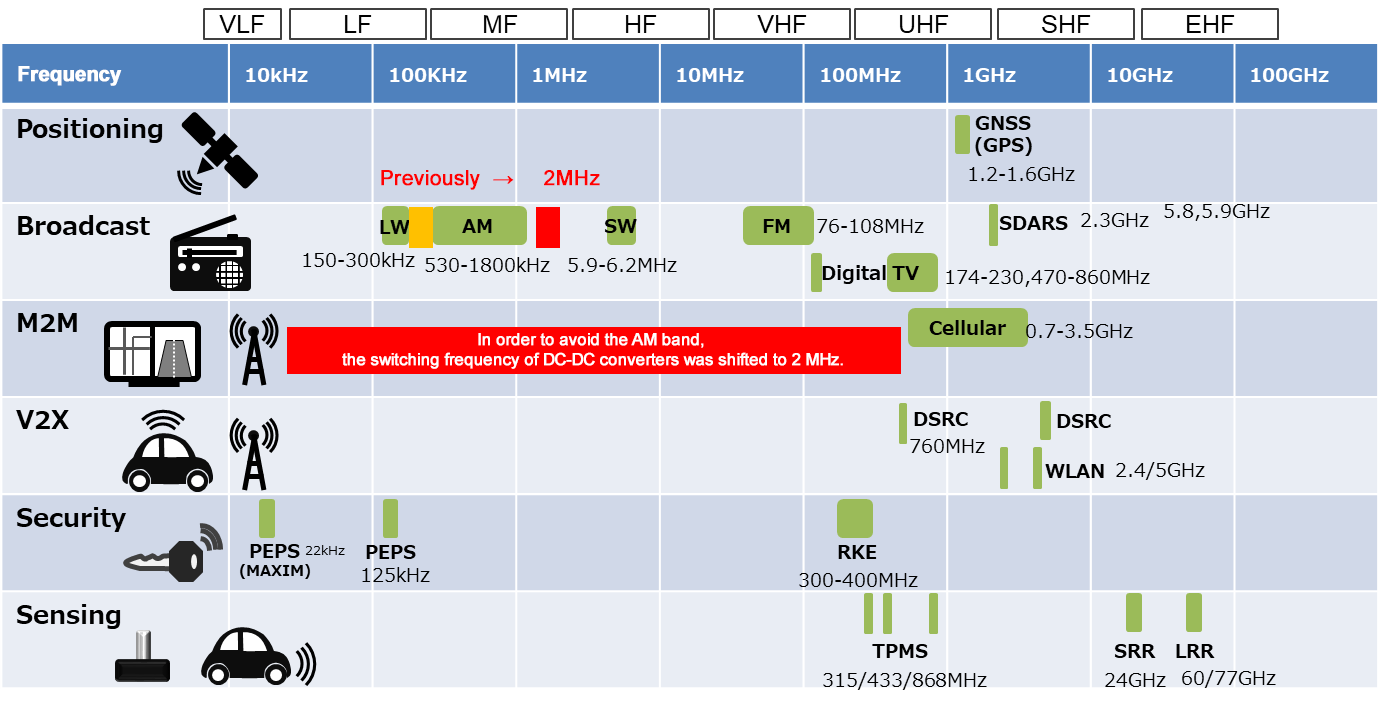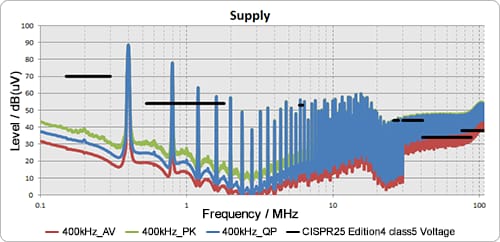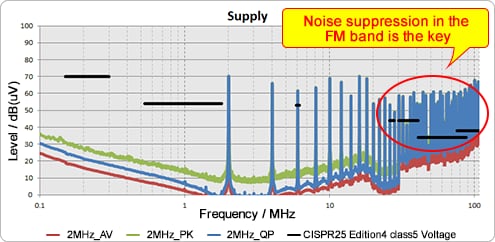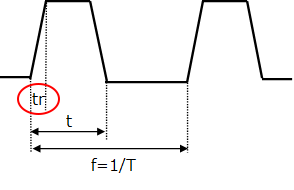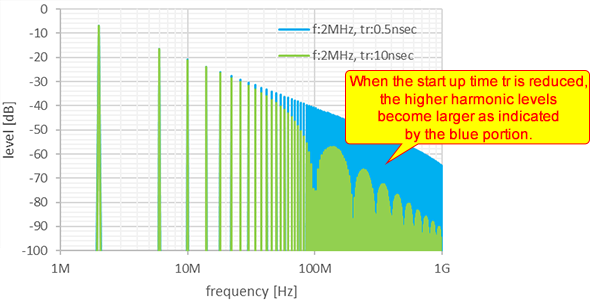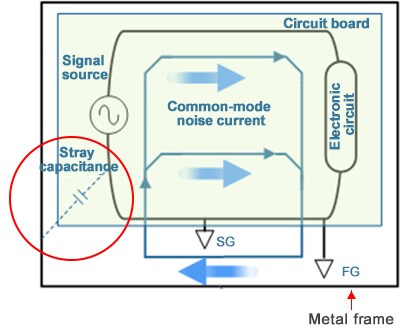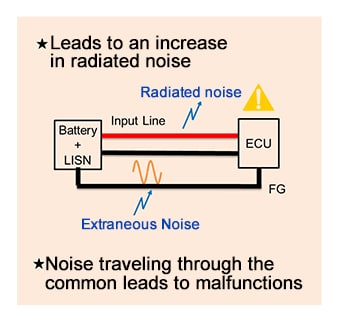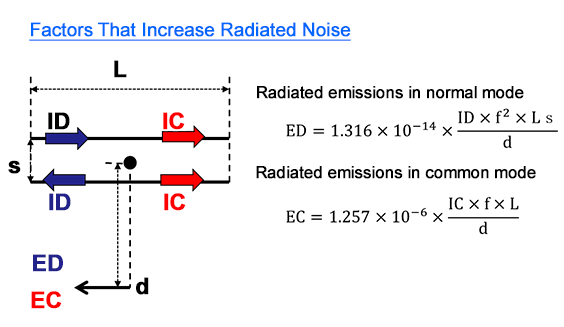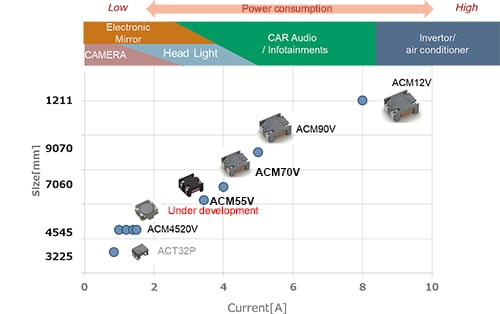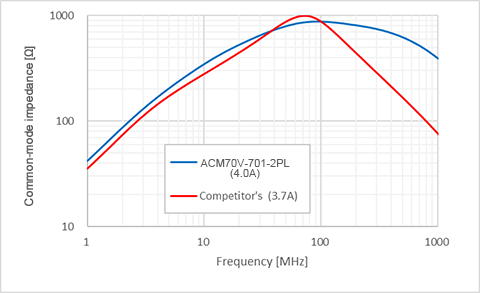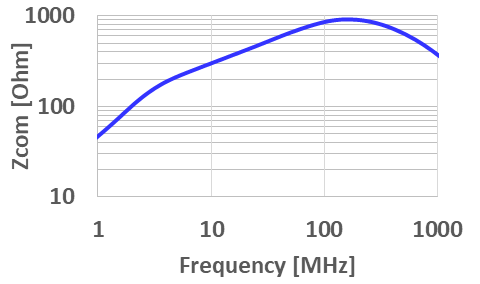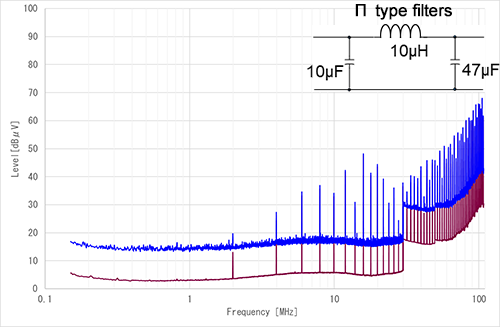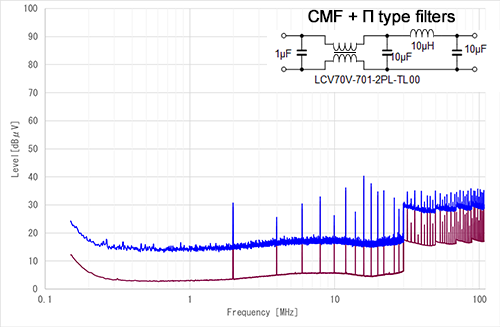Common-mode Filters for Automotive Power Supply Lines

Contents
- Basic structure of DC input filter circuits
- Normal (differential) mode noise and common-mode noise
- Trends in DC-DC converters for automotive ECUs
- Factors that increase noise in the FM band
- Features of TDK's common-mode filters for automotive power supply lines and product lineup
- Summary
- Contact Information
- Related Links
Basic structure of DC input filter circuits
The filter configuration of a DC input filter circuit is greatly affected by the way the GND is arranged on the board pattern, and it is necessary to use appropriate components depending on the bandwidth to be attenuated and the noise propagation route. In the initial design stage of EMI countermeasures, it is desirable to have a pattern configuration that allows for the placement of inductors (L), capacitors (C), and common-mode filters (CMF).
Normal (differential) mode noise and common-mode noise
There are two types of conducted noise: normal (differential) mode noise and common-mode noise. Normal mode noise occurs in the circuit line and flows in the opposite direction, while common-mode noise occurs between the circuit line and GND and flows in the same direction. When implementing noise countermeasures, it is necessary to confirm which mode of noise is occurring and to use appropriate countermeasure components.
For normal mode noise, inductors and capacitors are used, and for common-mode noise, common-mode filters are used.
Normal Mode
Noise flowing in circuit lines (flowing in the opposite direction as the line)
Figure 4
Common Mode
Noise flowing in the frame ground (flowing in the same direction as the line)
Figure 5
Trends in DC-DC converters for automotive ECUs
As more electronic devices are used in automobiles, more ECUs are being installed, and common-mode noise countermeasures are necessary. Current automotive ECU DC-DC converters use 2 MHz as the DC-DC converter switching frequency in order to avoid the AM band, so high-frequency noise countermeasures are important.
Change in noise when the switching frequency is 2 MHz
Conditions: Input 5 V, Output 1.2 V/2 A, no input filter
If the switching frequency is 2 MHz, the fundamental wave will be in the AM band or higher, and noise in the FM band increases.
Figure 7: Switching Frequency 400 KHz
Figure 8: Switching Frequency 2 MHz
The CISPR 25 Level 5 (Peak) standard values are indicated for reference.
Factors that increase noise in the FM band
Factors that increase noise in the FM band are increasing the switching start up speed and increasing the high-frequency portion. The high-frequency portion is more susceptible to common current loss due to the parasitic capacitance of the frame ground.
Figure 9
Figure 10: Trapezoidal Wave Spectrum
Figure 11
It is difficult to predict common-mode noise because the stray capacitance varies greatly depending on the way the GND is connected, but common-mode filters are effective in preventing common-mode noise.
Assume that a noise current of 1 µA is flowing in a cable with a loop area of 20 cm2 at a frequency of 80 MHz. At a distance of 1 m, the electric field strength values are:
ED= 0.084μV/m
EC=9μV/m
Even at the same current value, the effect of common current is larger
(about 100 times larger in the example above)
The magnitude of the radiated emissions in each mode can be determined using the following formula.
Differential current: ID
Common-mode current: IC
Line length: L
Line interval: s
Distance: d
Features of TDK's common-mode filters for automotive power supply lines and product lineup
TDK is expanding its lineup of filters compatible with various types of DC power lines up to a maximum current of 8 A. These products offer high impedance over a wide band width, and the operating temperature range Ta (environmental temperature) is -40° to 125°C.
| Item | Common-mode impedance (at 100 MHz) |
DC resistance | Rated current | Rated voltage | Insulation resistance | |||
|---|---|---|---|---|---|---|---|---|
| (Ω) min. | (Ω) typ. | (mΩ) max. | (A) max. | (V) max. | (MΩ) max. | |||
| ACT32P-102-2P-TL00 | 3.2x2.5x2.5 | - | 1000 | 250 | 0.65 | 80 | 10 | |
| ACM55V-701-2PL-TL00 | 5.5x5.5x3.5 | - | 700 | - | 3.0 | 80 | ||
| ACM70V-701-2PL-TL00 | 7.0x6.0x3.5 | 500 | 700 | 15 | 4.0 | |||
| ACM90V-701-2PL-TL00 | 9.0x7.0x4.5 | 500 | 700 | 10 | 5.0 | |||
| ACM90V-152-2PL-TL00 | 1100 | 1500 | 16 | 3.6 | ||||
| ACM12V-701-2PL-TL00 | 12.0x11.0x6.0 | 500 | 700 | 6 | 8.0 | |||
| ACM12V-172-2PL-TL00 | 1200 | 1700 | 12 | 4.8 | ||||
Table 1
Wide Bandwidth and High Noise Suppression
Has high common-mode impedance in representative bands such as the FM band and the cellularband.
Low-Profile Design
The low-profile design is 3.5 mm max., making it ideal for low-profile design ECUs that require a shield.
Summary
In conjunction with higher DC-DC converter operating frequencies, noise suppression in the FM band is becoming more important. The key to EMI countermeasures is to separate the normal mode from the common mode, and noise caused by the common mode in particular is affected by the pattern and layer configuration and the way the GND is arranged. Common-mode filters are effective in preventing common-mode noise. As indicated in the figure below, a normal mode filter alone does not decrease noise at 50 MHz and higher, but when a common-mode filter is also used, noise at 50 MHz and higher can be reduced.
In cases where EMI is a problem due to common-mode noise, a common-mode filter is an effective countermeasure, but adding a common-mode filter in a subsequent stage requires design changed, so it is recommended that a pattern be prepared in the design stage to allow for installation of a filter.



